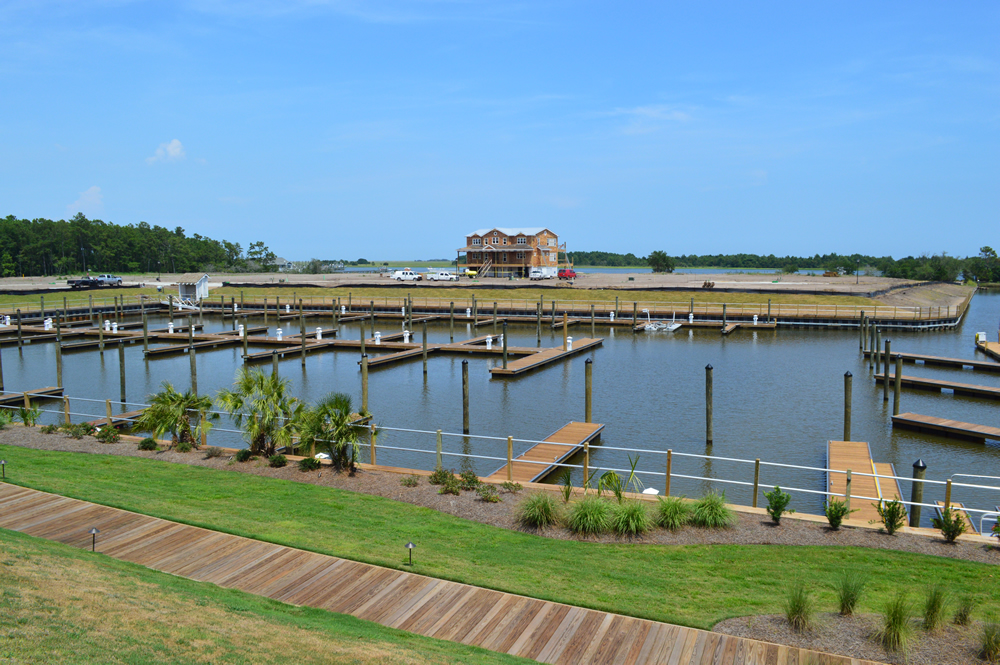To take advantage of coastal and water-adjacent living, many residents splurge on floating docks. Floating docks are exactly what they sound like: docks that simply rise and fall with the water. While these can be a costly investment, floating docks can be incredibly worthwhile. Unfortunately, with beautiful water scenery comes the likelihood of natural disasters like storms and hurricanes.
With global warming bringing about more natural disasters than ever before, it’s important to know how to secure and protect your floating dock against the elements. By taking the proper measures to protect your floating dock now, you can swerve costly repairs caused by damage that could have been prevented. In this article, we will go over the necessary steps you should take to ensure that your floating dock is as best protected as possible.
Risks to Floating Docks Posed by Natural Disasters
Natural disasters like hurricanes and other storms can cause major damage to both your property and its surrounding environment. For floating dock owners, lacking proper dock protections can mean the difference between safeguarding your dock and having to come to terms with irreparable damages.
Natural disasters can pose massive risks to your floating dock system. If you fail to secure your dock properly, storms can loosen units and change their orientation which can either render the dock useless or even cause it to blow away completely. In addition, forceful winds can rock the vessels anchoring into the floating dock, which can cause damage to both the vessels and the dock’s surface. For natural disasters like tornados, harmful flying debris can badly damage floating dock surfaces as well.
Ways to Protect Your Floating Dock
Before the extreme weather season arrives, you must take precautions to ensure the safety of your floating dock. Follow these 5 dock-protecting tips:
-
Ensure You Properly Install Your Floating Dock
When a storm approaches, strong winds, heavy rainfall, and large waves can cause the floating dock to shift, sway, or even tip over. This instability poses a risk to the boats attached to the dock, as they may be damaged by the sudden movements or collisions with the dock or other boats. Additionally, if the dock tips over, it can become submerged, making it difficult to retrieve or repair.
To prevent these issues, it’s essential to ensure that your floating dock is properly secured. This involves anchoring the dock to the shore or to underwater weights, using appropriate hardware, and selecting the right type of anchoring system based on the specific location and environmental conditions. Properly securing the dock can help it withstand the forces exerted by stormy weather, reducing the risk of damage to the dock and the boats moored to it.
-
Take Periodic Pictures of Your Dock and Observe Any Changes
Taking pictures of your boat dock periodically and looking for changes is an effective way to monitor the condition of your dock and identify potential problems before they become more serious. By regularly documenting the state of your dock, you can create a visual record that allows you to track any changes or signs of wear and tear that may not be immediately apparent.
Aim to take pictures of your boat dock once every month or once every two to three months, depending on your preference and the local weather conditions. More frequent documentation may be needed in areas prone to severe weather or significant environmental changes. Carefully examine the pictures and look for signs of wear, damage, or other changes in your dock’s condition. This might include a sloping dock, loose or damaged hardware, cracks in the decking, or signs of corrosion on metal components.
By identifying changes or issues early, you can address them promptly, preventing more extensive damage or costly repairs. For example, if you notice that your dock has started to slope into the water, you can investigate the cause – such as erosion, anchor displacement, or structural issues – and take appropriate action to remedy the problem.
-
Clean Your Dock Daily with a Water Pressure Washer
Using a water pressure washer is an effective method for cleaning your boat dock, as it helps remove mildew, debris, and dirt that can accumulate over time. Regular cleaning is essential to maintaining the appearance and structural integrity of your dock, especially if it is made of wood.
Regularly cleaning your boat dock using a water pressure washer helps to remove dirt, debris, and mildew, which can cause damage or weaken the wood over time. Additionally, a clean dock is more visually appealing and safer for use, as it reduces the risk of slips or falls caused by slippery surfaces. Failing to clean your boat dock can lead to a buildup of dirt, debris, and mildew, which can weaken the wood and potentially cause structural damage. This may result in costly repairs or even the need to replace the dock entirely.
-
Prevent Dry Rot by Sealing Wooden Floating Docks
Wooden canoe docks, like any other wooden structures exposed to water, are susceptible to dry rot if not properly sealed. Dry rot is a type of wood decay caused by fungi that thrive in damp conditions. To protect your wooden dock from this issue, it’s essential to use a sealer that creates a barrier between the wood and the water, preventing moisture buildup and prolonging the life of the dock.
Sealing a wooden dock is crucial because it helps prevent water from entering the wood and causing it to rot. Wooden docks are constantly exposed to water from rivers, lakes, and rain, making them particularly vulnerable to decay if left unprotected. A sealer acts as a barrier between the wood and water, preventing moisture from penetrating the wood’s surface. This reduces the likelihood of fungal growth and wood decay, ensuring the dock remains structurally sound and visually appealing.
-
Prevent Boats from Getting Damaged with Dock Bumpers
Using bumpers on your boat dock is an effective way to protect both your boat and the dock from potential damage caused by collisions, especially during stormy or windy weather conditions. Bumpers, also known as fenders, are cushioning devices typically made of durable materials like foam, rubber, or vinyl. They are designed to absorb the impact and protect the surfaces of both the boat and the dock from damage during collisions.
Bumpers can be placed strategically along the sides of your boat dock, as well as on the boat itself. This creates a protective barrier between the dock and the boat, reducing the risk of damage in case of contact. During stormy or windy weather, your boat may be subjected to strong waves and currents, which can cause it to sway or drift, potentially colliding with the dock. Bumpers help minimize the impact of these collisions, protecting both your boat and the dock from scratches, dents, or more severe structural damage.
Regularly inspect your bumpers for signs of wear and replace them as necessary to ensure they continue to provide adequate protection. High-quality bumpers can last for several years, but their lifespan may vary depending on factors such as frequency of use, weather conditions, and the materials used in their construction.
By installing bumpers on your boat and dock, you can have greater confidence in the safety of your property during inclement weather. When the storm subsides, you can inspect the boat and dock, and, thanks to the bumpers, you are more likely to find them in good condition.





